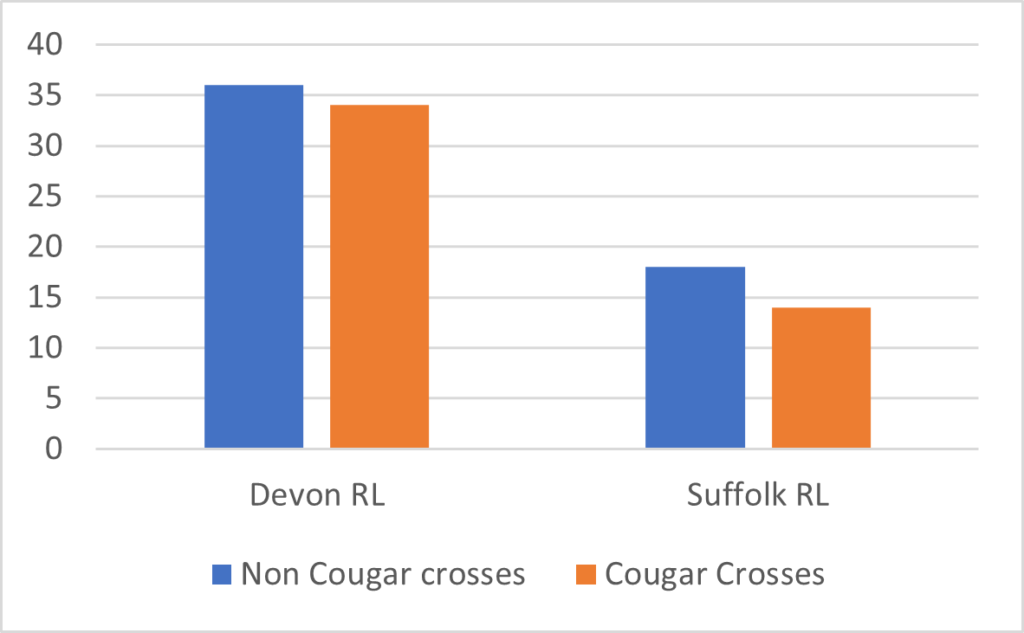In recent years, the talk around disease in winter wheat has been about yellow rust. Mild winters and warm dry springs meant that this disease has overtaken septoria tritici, which has historically been the major issue due to our maritime climate.
However, in June this year, growers started reporting unexpectedly high levels of septoria. This followed a cold dry April when crops were stressed and disease levels were low. T0s were missed or reduced but fast forward to May and the weather turned wet and fungicide timings became stretched.
Many varieties saw higher disease levels than their Recommended List resistance ratings would suggest, with soft Group 3s that had Cougar in their parentage being affected the most.
Additionally, the lesions on some of these varieties looked atypical of the disease, more orange than brown with very small pycnidia, resembling the symptoms last seen in the wet spring and summer of 2012. Testing by FERA confirmed that these were a mix of septoria and microdochium nivale – primarily an ear disease that can also develop on leaves when conditions are right.
Varieties without Cougar in their parentage also showed a higher level of septoria, potentially because of high levels of microdochium.
Other issues included fungicide treatments performing less well at controlling septoria. This could be due to the fact that many active ingredients are less effective against microdochium, which would have compounded the increased visual symptoms.

Dr Cathy Hooper, RAGT Seeds technical sales manager, said: “On my travels around the country this summer, the levels of septoria I saw in June and July were the highest I had seen for some years, but very variable. Infection levels I recorded in untreated trials ranged from 60% to 10% on the same variety, depending on location.”
Cougar was added to the Recommended List in 2013. Higher than expected disease levels were seen in 2015 and after an AHDB-funded investigation, it was concluded that the loss of resistance at the time was limited to Cougar.
In Ireland last year, high levels of seportia were reported and was again linked to Cougar-derived varieties. However, Dr Hooper noted that a closer look at individual varieties makes it difficult to condemn every variety that has Cougar in the parentage.
| Devon | Suffolk | |
| Barrel | 60 | 18 |
| Kerrin | 60 | 7 |
| Skyscraper | 55 | 15 |
| Extase | 15 | 2 |
| Cougar crosses | ||
| Firefly | 50 | 10 |
| RGT Saki | 35 | 1 |
| LG Astronomer | 20 | 5 |
| LG Prince | 35 | 10 |
| RGT Silversurfer | 20 | 2 |
![Dr Cathy Hooper[2]](https://s45857.pcdn.co/wp-content/uploads/2021/09/Dr-Cathy-Hooper2.jpeg)
“Most varieties on the RL have multigenic resistance to septoria tritici, which means that although it’s extremely difficult to breed a variety with a 9 for septoria (unlike for yellow rust where there is major gene resistance), it does mean that the resistance is more durable and unlikely to break down rapidly if the pathogen virulence changes. The good news is that the fungicide sensitivity of the new septoria isolate remains unchanged,” she said.
“We’re likely to see septoria ratings for most varieties on the new RL come down, some more than others, but there will be no huge drops we often see in yellow rust ratings.
“However, these ratings are national averages, so it’s important that growers visit their local field trials during the season to see how the varieties they may wish to grow are performing.
“Needless to say, if we see a return to ‘normal’ warm dry springs in 2022, yellow rust will become the hot topic again!”


![Septoria reemerges in harvest 2021 RGT Saki untreated (Early-drilled RL trial North Yorkshire, picture taken 5 July 2021)[2]](https://s45857.pcdn.co/wp-content/uploads/2021/09/RGT-Saki-untreated-Early-drilled-RL-trial-North-Yorkshire-picture-taken-5-July-20212.jpg)